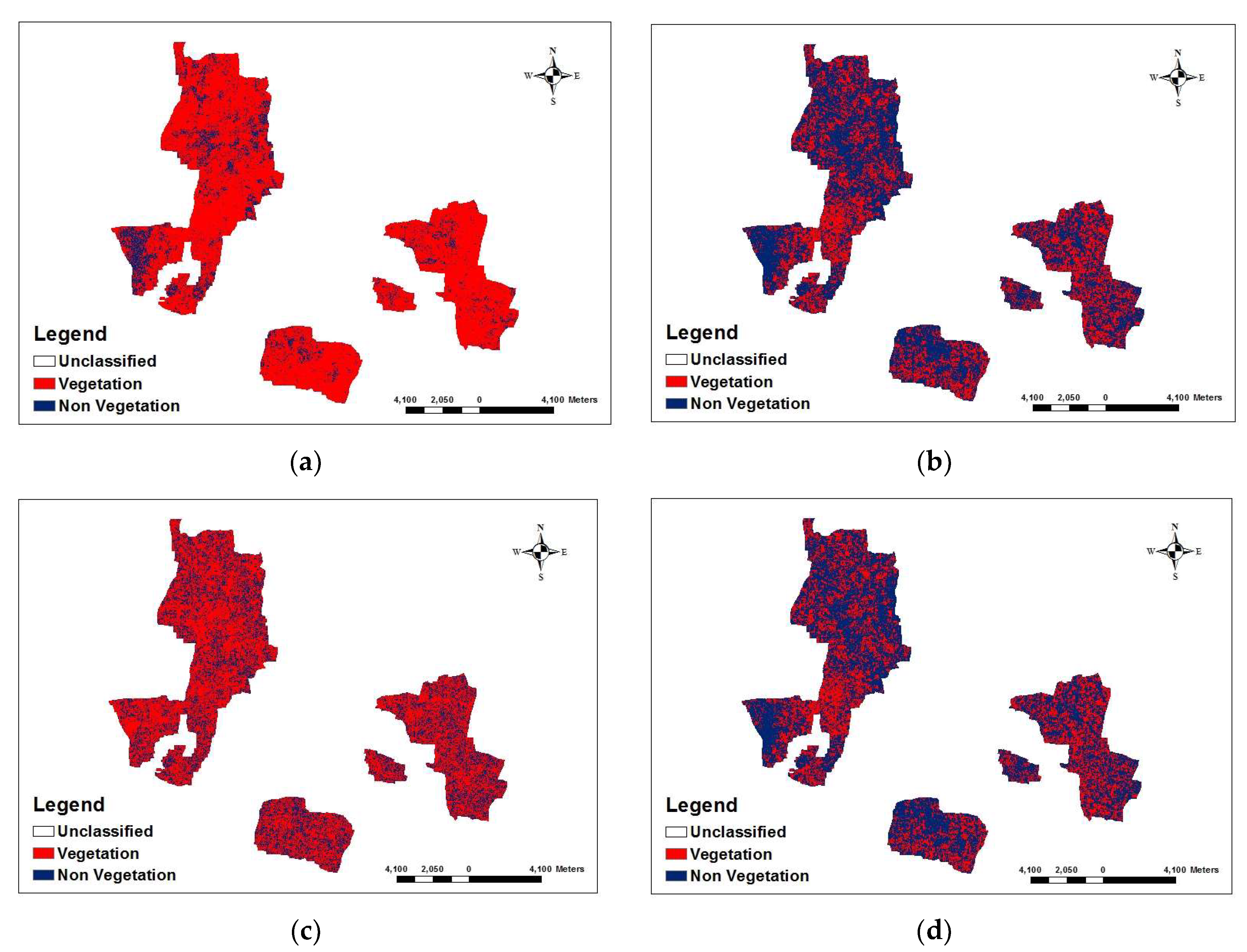Sustainable Development: Evaluating Optimal Technique for Spatial Data Forecast †
Abstract
:1. Introduction
1.1. Moving Average Method
- Calculate Simple Moving Average (SMA) with N = 2, 3, 4 and 5.
- 2.
- Calculate Double Moving Average (DMA) with N = 2, 3, 4 and 5.
- 3.
- Forecast using the relation as:
1.2. Exponential Smoothing Method
- Calculate Simple Exponential Smoothing estimates for different values (0.4…0.8) of α.
- 2.
- Calculate Double Exponential Smoothing estimates for all values of α.
- 3.
- Forecast using the relation as:
1.3. Linear Regression Method
2. Methodology
3. Implementation
4. Results and Discussion
5. Conclusion
References
- Jaedicke, C.; Syre, E.; Sverdrup-Thygeson, K. GIS-aided avalanche warning in Norway. Comput. Geosci. 2014, 66, 31–39. [Google Scholar] [CrossRef]
- Feidas, H.; Kontos, T.; Soulakellis, N.; Lagouvardos, K. A GIS tool for the evaluation of the precipitation forecasts of a numerical weather prediction model using satellite data. Comput. Geosci. 2007, 33, 989–1007. [Google Scholar] [CrossRef]
- Castrillón, M.; Jorge, P.A.; López, I.J.; Macías, A.; Martín, D.; Nebot, R.J.; Sabbagh, I.; Quintana, F.M.; Sánchez, J.; Sánchez, A.J.; et al. Forecasting and visualization of wildfires in a 3D geographical information system. Comput. Geosci. 2011, 37, 390–396. [Google Scholar] [CrossRef]
- Armstrong, J.S. Long-Range Forecasting from Crystal Ball to Computer, 2nd ed.; John Wiley & Sons: Hoboken, NJ, USA, 1985; pp. 160–172. [Google Scholar]
- Makridakis, S.; Wheelwright, S.C.; Hyndman, R.J. Forecasting Methods and Applications, 3rd ed.; John Wiley & Sons: Hoboken, NJ, USA, 2008; pp. 81–231. [Google Scholar]
- Gupta, R. Introduction to Systems. New Age International, 2005; pp. 468–475. [Google Scholar]
- Lillesand, T.; Kiefer, R.W.; Chipman, J. Remote Sensing and Image Interpretation, 6th ed.; John Wiley & Sons: Hoboken, NJ, USA, 2014; p. 464. [Google Scholar]

| Classified Images of 2016 | Vegetation | Non Vegetation | Vegetation Match (%) |
|---|---|---|---|
| Actual | 3,686,444 | 660,042 | 100 |
| MA | 1,666,694 | 2,688,770 | 45.2114287 |
| ES | 2,894,681 | 1,460,529 | 78.5223104 |
| LR | 1,669,782 | 2,685,674 | 45.295195 |
| Change in | Increase by 10% | Decrease by 10% | Total Change | Change in Pixels (%) |
|---|---|---|---|---|
| Actual & MA | 2,118,079 | 87,308 | 2,205,387 | 50.73953994 |
| Actual & ES | 1,196,802 | 391,604 | 1,588,406 | 36.54460178 |
| Actual & LR | 2,125,082 | 97,987 | 2,223,069 | 51.14635133 |
Publisher’s Note: MDPI stays neutral with regard to jurisdictional claims in published maps and institutional affiliations. |
© 2018 by the authors. Licensee MDPI, Basel, Switzerland. This article is an open access article distributed under the terms and conditions of the Creative Commons Attribution (CC BY) license (https://creativecommons.org/licenses/by/4.0/).
Share and Cite
Kumar, G.; Gupta, R. Sustainable Development: Evaluating Optimal Technique for Spatial Data Forecast. Proceedings 2018, 2, 1371. https://doi.org/10.3390/proceedings2221371
Kumar G, Gupta R. Sustainable Development: Evaluating Optimal Technique for Spatial Data Forecast. Proceedings. 2018; 2(22):1371. https://doi.org/10.3390/proceedings2221371
Chicago/Turabian StyleKumar, Gaurav, and Rajiv Gupta. 2018. "Sustainable Development: Evaluating Optimal Technique for Spatial Data Forecast" Proceedings 2, no. 22: 1371. https://doi.org/10.3390/proceedings2221371
APA StyleKumar, G., & Gupta, R. (2018). Sustainable Development: Evaluating Optimal Technique for Spatial Data Forecast. Proceedings, 2(22), 1371. https://doi.org/10.3390/proceedings2221371




